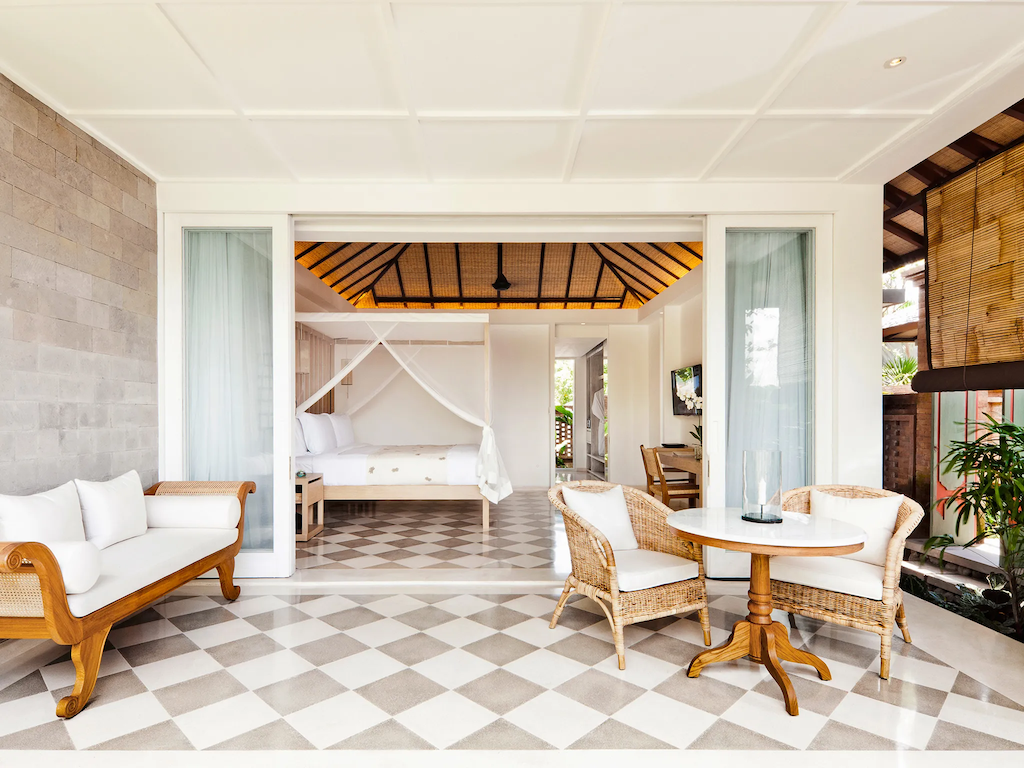As travel picks up once again, let’s take some time to look at how much has changed in hospitality design over the past few years. Hotel architecture has never existed in a vacuum. They are shaped by current events (like, say, a pandemic) and current attitudes (sustainability), but always with an eye toward the future.
Interestingly, hospitality design also has the potential to redirect the conversation, question it, and take it to a completely different direction. One way to do this is through FF&E specification. Thought-provoking local art, for example, can give guests a glimpse of culture, history, and customs of their current hotel’s location.
Here are six elements influencing travelers’ behaviors and the choices they make – plus, how hotel design can make use of furniture, fixtures, and equipment (FF&E) to respond to these new demands.
Feel free to jump to the topic that interests you.
Local, Authentic, and Personalized Experiences are King
Buy experiences, not things: Scientific research says humans are happiest when they live in anticipation, gather stories, and build memories. Even if it rains during a beach vacation, scientists say, it often turns into a good story of staying inside to play board games and spend time together.
Hotels know this. It’s why they do their best to create unique and authentic experiences that reflect the local culture and history of a destination. Hotel designs are incorporating local materials, art, and customs to create a sense of place that connects guests with the local community.
- Local materials: Hotels are using FF&E made from local materials such as wood, stone, and textiles to create a sense of place. For example, a hospitality design agency in Bali may use handcrafted teak furniture or a hotel in Morocco may use colorful local textiles for upholstery.
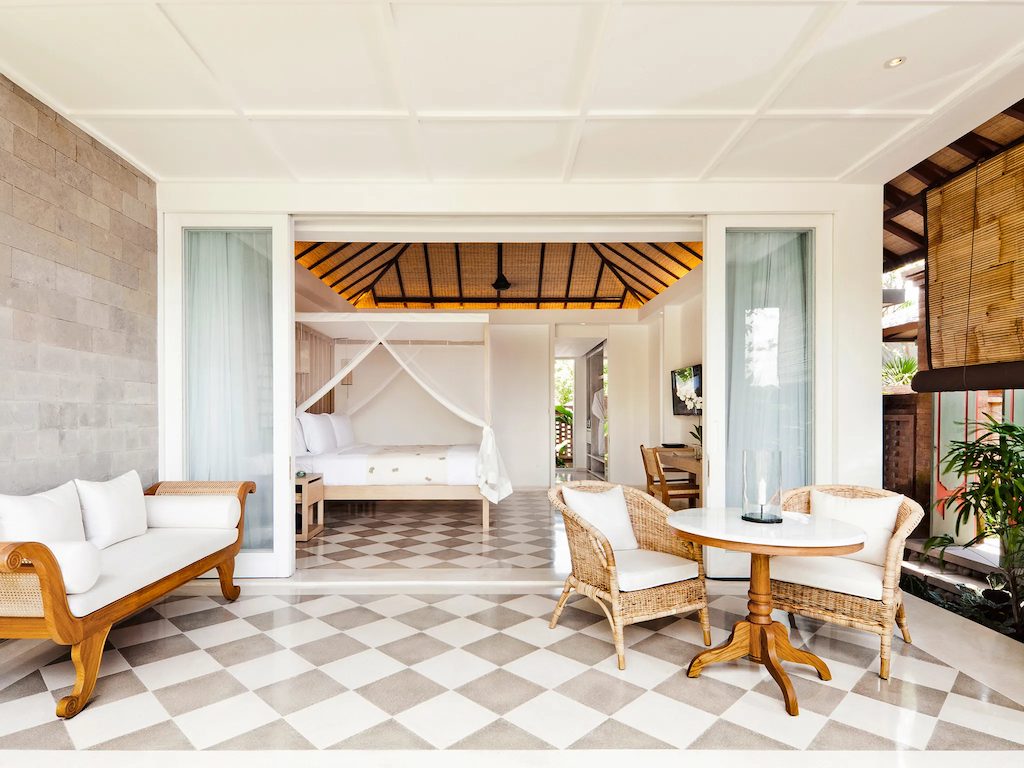
COMO Uma Ubud uses teak to incorporate local flavor
- Art and decor: Incorporating local art and decor is another way to create a sense of place. Hotels may commission local artists to create custom pieces or source art and decor from local markets. For example, a hotel in Mexico may use brightly colored tiles for the flooring or walls, or a hotel in Japan may use traditional paper lanterns for lighting.
- Customized furniture: Hotels are increasingly commissioning custom FF&E to create a unique look and feel. Customized furniture can be designed to reflect the local culture and history of a destination. For example, a hotel in Hawaii may commission a custom bed frame made from Koa wood, a native hardwood.
- Textiles and soft furnishings: Hotels are using FF&E such as bedding, curtains, and throw pillows made from local textiles to add a touch of authenticity to guest rooms. For example, a hotel in India may use intricately embroidered textiles for bedding or curtains.
- Local amenities: Hotels may provide locally sourced amenities such as toiletries, snacks, or beverages in guest rooms. This not only supports local businesses but also provides guests with an authentic taste of the destination.
By using FF&E to create local, authentic, and personalized experiences, hotel architecture can differentiate locations from competitors and provide guests with a unique and memorable stay.
Conscious and Conscientious Choices: Sustainability
Travel is inherently not a sustainable activity, but there are many ways to mitigate carbon footprint. France, for example, has banned short haul flights.
On the other hand, hospitality design has been putting more emphasis on environmentally friendly practices and materials. This includes energy-efficient lighting, water-saving fixtures, and the use of recycled and renewable materials.
Here are some ways hotel design is using FF&E to achieve sustainability goals:
- Sustainable materials: Hotels are choosing FF&E made from sustainable materials, such as bamboo, reclaimed wood, or recycled plastic. For example, some hotels are using furniture made from reclaimed wood, which not only reduces waste but also adds a unique and rustic charm to guest rooms.
- Energy-efficient lighting: Hotels are incorporating energy-efficient lighting fixtures and bulbs into their FF&E design, such as LED lights or smart lighting systems. This reduces energy consumption and lowers energy costs while still providing adequate lighting for guests.
- Water-saving fixtures: Hotels are also incorporating water-saving fixtures into their FF&E, such as low-flow showerheads, faucets, and toilets. This reduces water consumption, which is especially important in areas experiencing water scarcity.
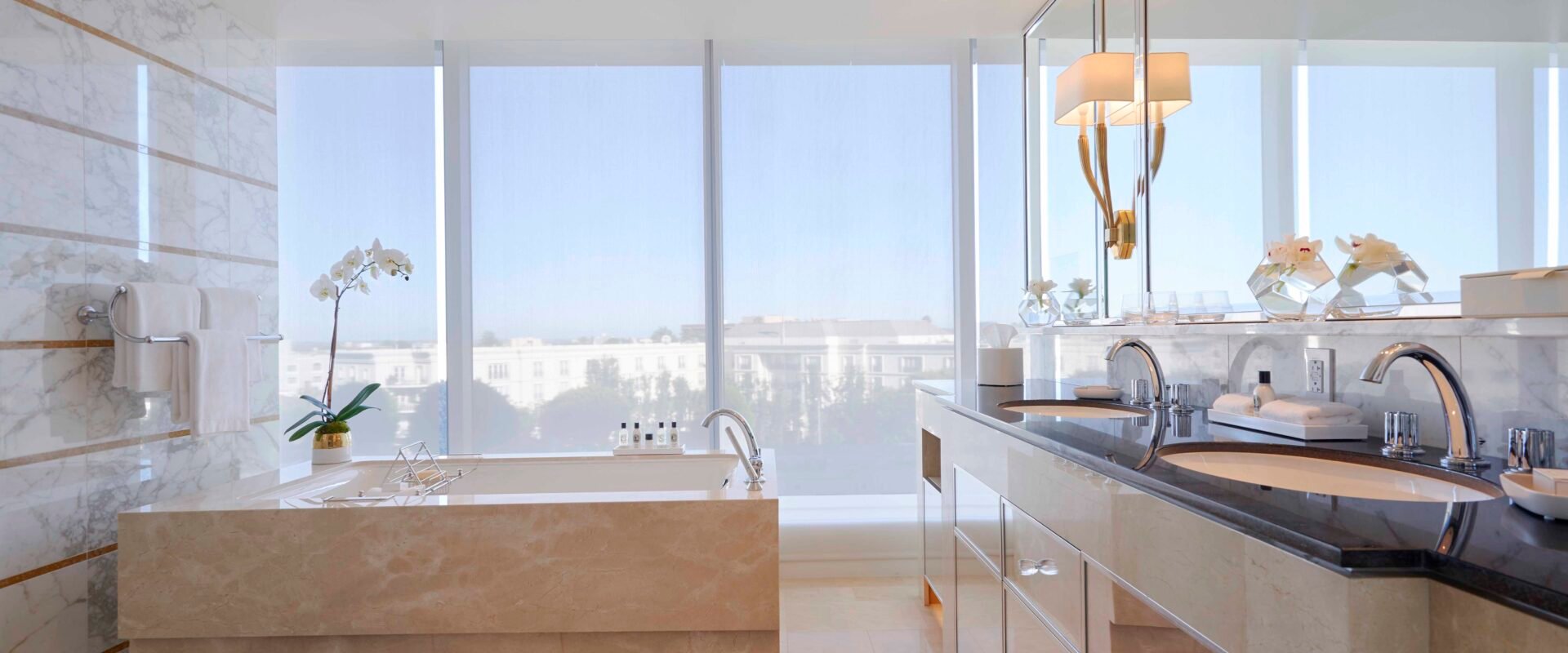
The Waldorf Astoria Beverly Hills has a Gold LEED certification
- Recycling programs: Hotels are implementing recycling programs for their FF&E, such as recycling bins for paper, plastic, and glass. This helps reduce waste and encourages guests to participate in sustainable practices during their stay.
- Green furniture: Some hotels are choosing FF&E that is certified as eco-friendly or sustainable, such as furniture made from FSC (Forest Stewardship Council) certified wood. This certification ensures that the wood used for the furniture is sustainably sourced and managed.
- Upcycling: Hotels are also using FF&E to upcycle materials and reduce waste. For example, old shipping pallets can be upcycled into headboards, or discarded wine barrels can be turned into tables or chairs.
By using FF&E to create sustainability in hospitality design, hotels can reduce their environmental impact, save on operational costs, and provide guests with a more eco-friendly and responsible experience.
Normalizing Selfcare: Emphasis on Wellness and Wellbeing
Hotels are placing a greater emphasis on wellness and well-being by incorporating elements such as fitness centers, spas, meditation rooms, and healthy dining options. Biophilic design, which incorporates natural elements into the built environment, is also gaining popularity as it has been shown to have a positive impact on mental health and well-being.
Hotels are increasingly using FF&E (Furniture, Fixtures, and Equipment) to ensure wellness and well-being for guests. Here are some ways hotels are using FF&E to achieve this:
- Comfortable bedding: Hotels are using high-quality mattresses, pillows, and linens to ensure guests get a good night's sleep. This is particularly important for wellness and well-being, as good sleep is essential for physical and mental health.
- Ergonomic furniture: Hotels are incorporating ergonomic furniture, such as chairs and desks, into their guest rooms to ensure guests have a comfortable and healthy workspace. This is particularly important for business travelers or those who need to work remotely during their stay.
- Relaxation amenities: Hotels are providing relaxation amenities, such as in-room yoga mats, meditation cushions, and aromatherapy diffusers, to help guests de-stress and unwind. This is particularly important for wellness and well-being, as stress reduction is essential for overall health.
- Fitness amenities: Hotels are providing fitness amenities, such as in-room exercise equipment, fitness centers, and fitness classes, to help guests maintain their fitness routine while traveling. This is particularly important for wellness and well-being, as exercise is essential for physical and mental health.
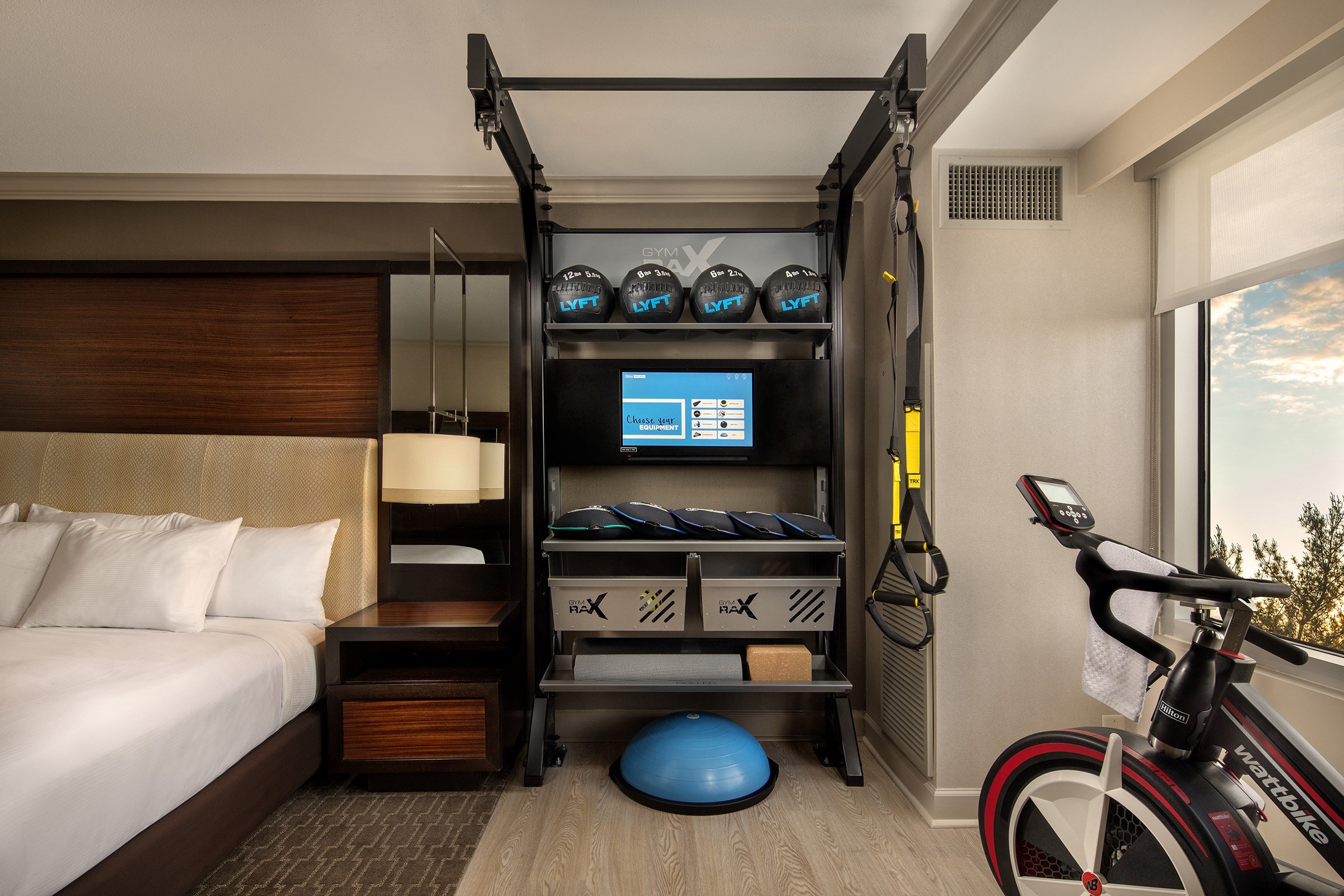
Hilton's Five Feet to Fitness provides in-room gym equipment
- Healthy dining options: Hotels are providing healthy dining options, such as organic and locally sourced foods, vegetarian and vegan options, and low-calorie choices. This is particularly important for wellness and well-being, as diet is essential for overall health.
- Biophilic design: Hotel interiors are incorporating biophilic design into their FF&E to bring nature indoors and create a calming and relaxing atmosphere. This includes using natural materials, such as wood and stone, and incorporating plants and natural light into the design.
By using FF&E to ensure wellness and well-being for guests, hotels can provide a more holistic and health-focused experience for their guests, leading to higher guest satisfaction and loyalty.
Contactless and Efficient: Technology
Technology is the river that can’t be stopped. Hotel interior design is constantly integrating more and more technology to improve guest security, efficiency, and overall experience. This includes features such as mobile check-in, keyless room entry, in-room tablets for controlling room functions, and voice-activated virtual assistants.
Hotels are increasingly using high tech FF&E (Furniture, Fixtures, and Equipment) to improve guest experiences. Here are some ways hotels are using high tech FF&E to achieve this:
- Smart room controls: Hotels are incorporating smart room controls into their FF&E, allowing guests to control room temperature, lighting, and entertainment systems from a single device, such as a tablet or smartphone.
- Voice-activated assistants: Hotels are incorporating voice-activated assistants, such as Amazon Alexa or Google Home, into their FF&E to allow guests to request services or ask for information without needing to pick up the phone or interact with hotel staff.
- Virtual and augmented reality: Hotels are using virtual and augmented reality technologies to provide guests with immersive experiences, such as virtual tours of the hotel, local attractions, or historical sites.
- Mobile check-in and check-out: Hotels are using mobile check-in and check-out technologies, allowing guests to bypass the front desk and complete these processes from their smartphones or tablets.
- In-room tablets: Hotels are using in-room tablets to provide guests with a variety of services, such as ordering room service, requesting housekeeping services, or booking local tours or activities.
- High-speed internet and connectivity: Hotels are providing high-speed internet access and charging stations for personal devices, ensuring guests can stay connected and charged throughout their stay.
By using high tech FF&E to improve guest experiences, hotels can provide a more seamless and convenient experience for guests, leading to higher guest satisfaction and loyalty.
Blurring Work and Travel: Flexible, Adaptable Spaces
It’s the perfect confluence of circumstances: unaffordable real estate, the pandemic proving workers can be effective away from the office, and a bigger-than-ever emphasis on global experiences.
Remote work is on the rise. More and and more, we’re seeing travelers staying longer-term in different places.
Because of this, hotel architecture has been creating flexible spaces that can be used for a variety of purposes, such as coworking spaces, meeting rooms, and event spaces. This trend also includes the use of modular furniture and multi-functional rooms that can be easily reconfigured for different uses.
- Modular furniture: Hotels are incorporating modular furniture into their FF&E, allowing them to easily reconfigure guest rooms, public spaces, and meeting rooms to meet the changing needs of guests.
- Moveable walls: Hotels are installing moveable walls that can be used to create smaller or larger spaces as needed, making it easier to accommodate different group sizes and activities.
- Multi-functional furniture: Hotels are using multi-functional furniture, such as tables that can be used for dining, work, or entertainment, to maximize space and functionality.
- Folding or stacking chairs and tables: Hotels are using folding or stacking chairs and tables that can be easily stored when not in use, making it easier to create space for different activities.
- Wireless technology: Hotels are using wireless technology, such as wireless speakers and charging stations, to make it easier to reconfigure spaces without worrying about power or connectivity.
- Sustainable materials: Hotels are choosing FF&E made from sustainable materials, such as bamboo or recycled plastic, which can be repurposed or recycled when no longer needed.
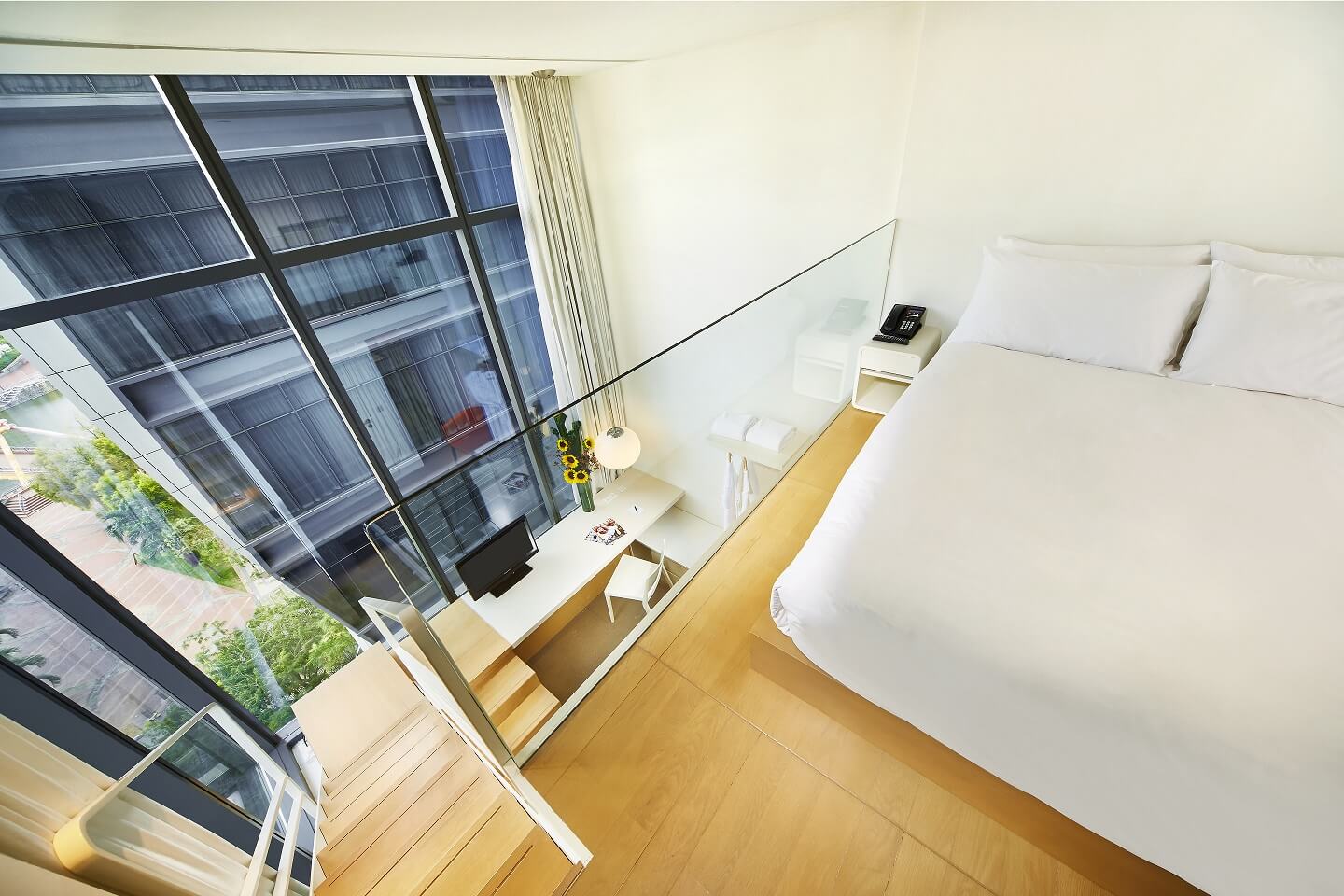
Studio M in Singapore offers loft suites
By using FF&E to create flexible and adaptable spaces, hotels can provide a more versatile and customizable experience for guests, allowing them to adapt to different needs and preferences. This can lead to higher guest satisfaction and loyalty, as well as more efficient use of space and resources for the hotel.
Luxury Meets Casual
The trend towards more casual and relaxed environments is also being seen in luxury hotel design, with hotels incorporating more natural materials, soft colors, and comfortable furnishings to create a more relaxed and inviting atmosphere. This trend is also reflected in the rise of boutique hotels that offer personalized experiences in intimate settings.
Here are some ways hotels are using FF&E to create casually luxurious spaces:
- High-end materials: Hotels are using high-end materials, such as leather, velvet, and marble, to create a luxurious feel in their spaces. However, they are pairing these materials with casual accents, such as wood or natural fibers, to create a more relaxed atmosphere.
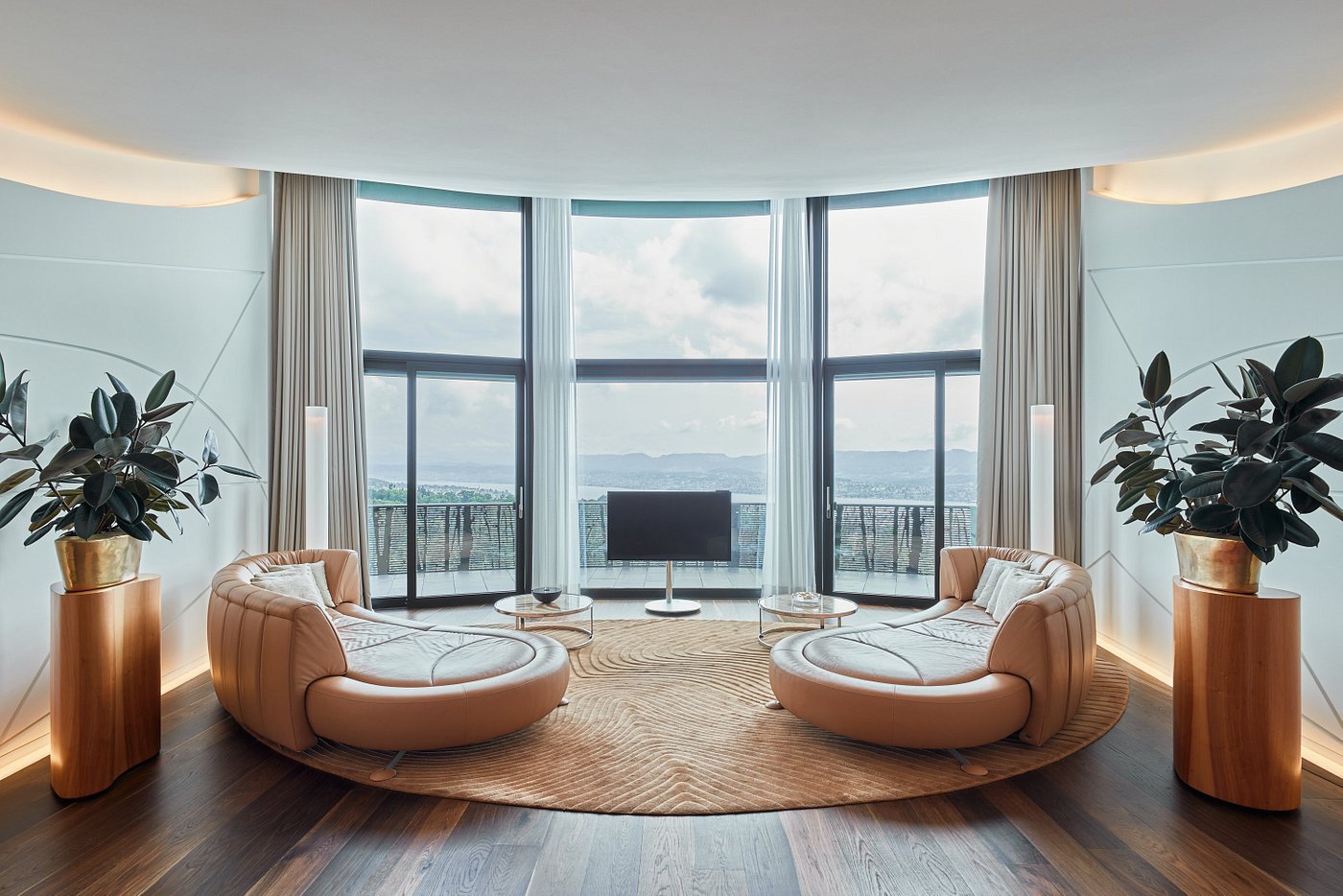
The Carezza, a Presidential suite in the Grand Dolder Hotel in Switzerland, features oversized leather sofas and a neutral palette
- Oversized furniture: Hotels are incorporating oversized furniture, such as sofas or chairs, into their spaces to create a comfortable and casual vibe. These pieces are often upholstered in high-end materials, such as velvet or leather, to create a sense of luxury.
- Soft lighting: Hotels are using soft, warm lighting to create a cozy and inviting atmosphere. This can be achieved through the use of lamps, sconces, or dimmer switches.
- Neutral color palette: Hotels are using neutral colors, such as beige or gray, to create a calming and sophisticated atmosphere. These colors are often paired with pops of color or pattern to add interest and personality to the space.
- Artwork and accessories: Hotels are using artwork and accessories, such as sculptures or decorative pillows, to add personality and character to their spaces. These pieces can be high-end or more casual, depending on the desired aesthetic.
- Open layouts: Hotels are using open layouts to create a sense of spaciousness and casualness in their spaces. This can be achieved through the use of large windows, open floor plans, or minimalistic furnishings.
By using FF&E to create spaces where luxury meets casual, hotels can provide guests with a high-end experience that is also comfortable and inviting. This can lead to higher guest satisfaction and loyalty, as well as a more relaxed and enjoyable experience for guests.
